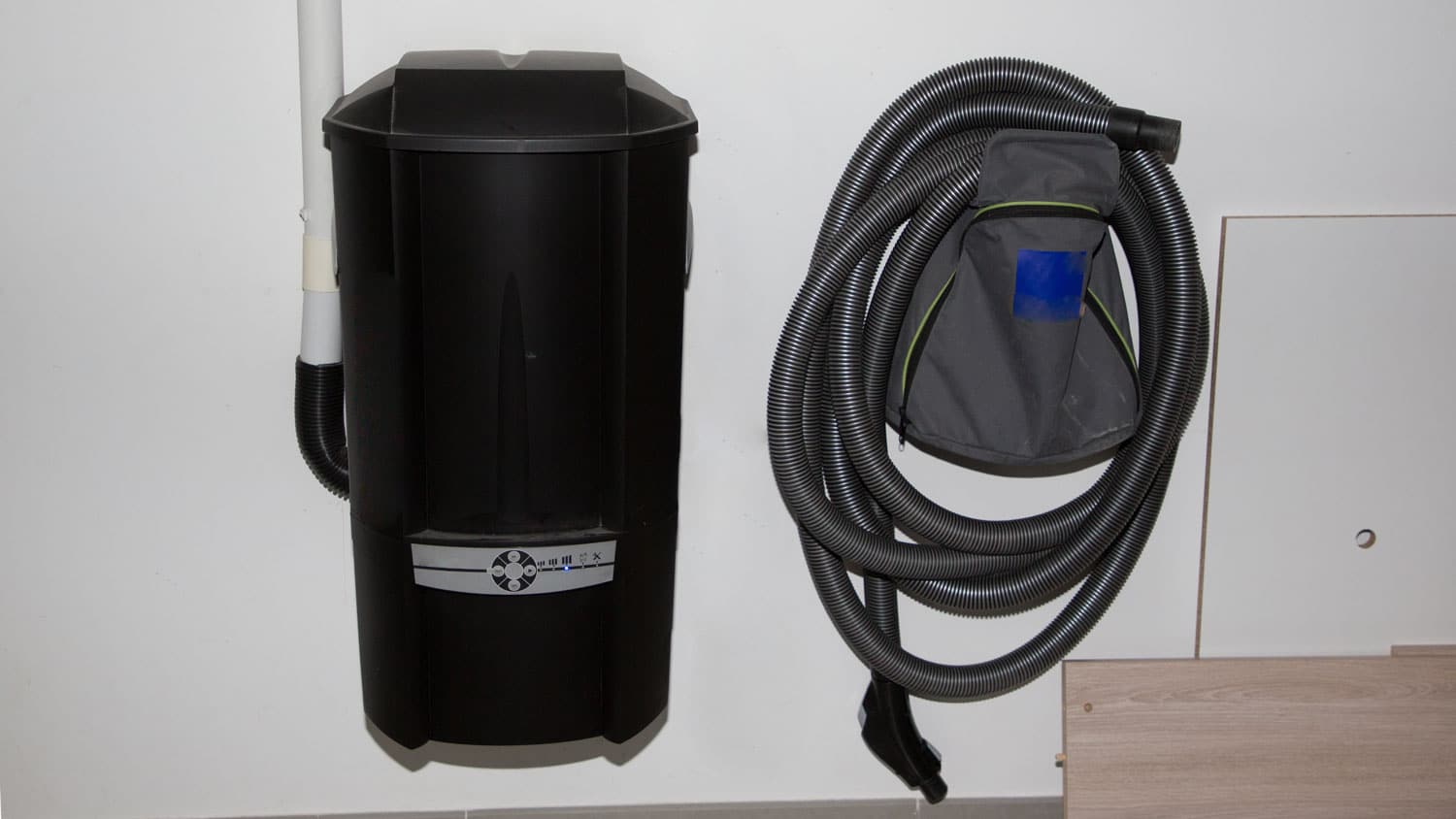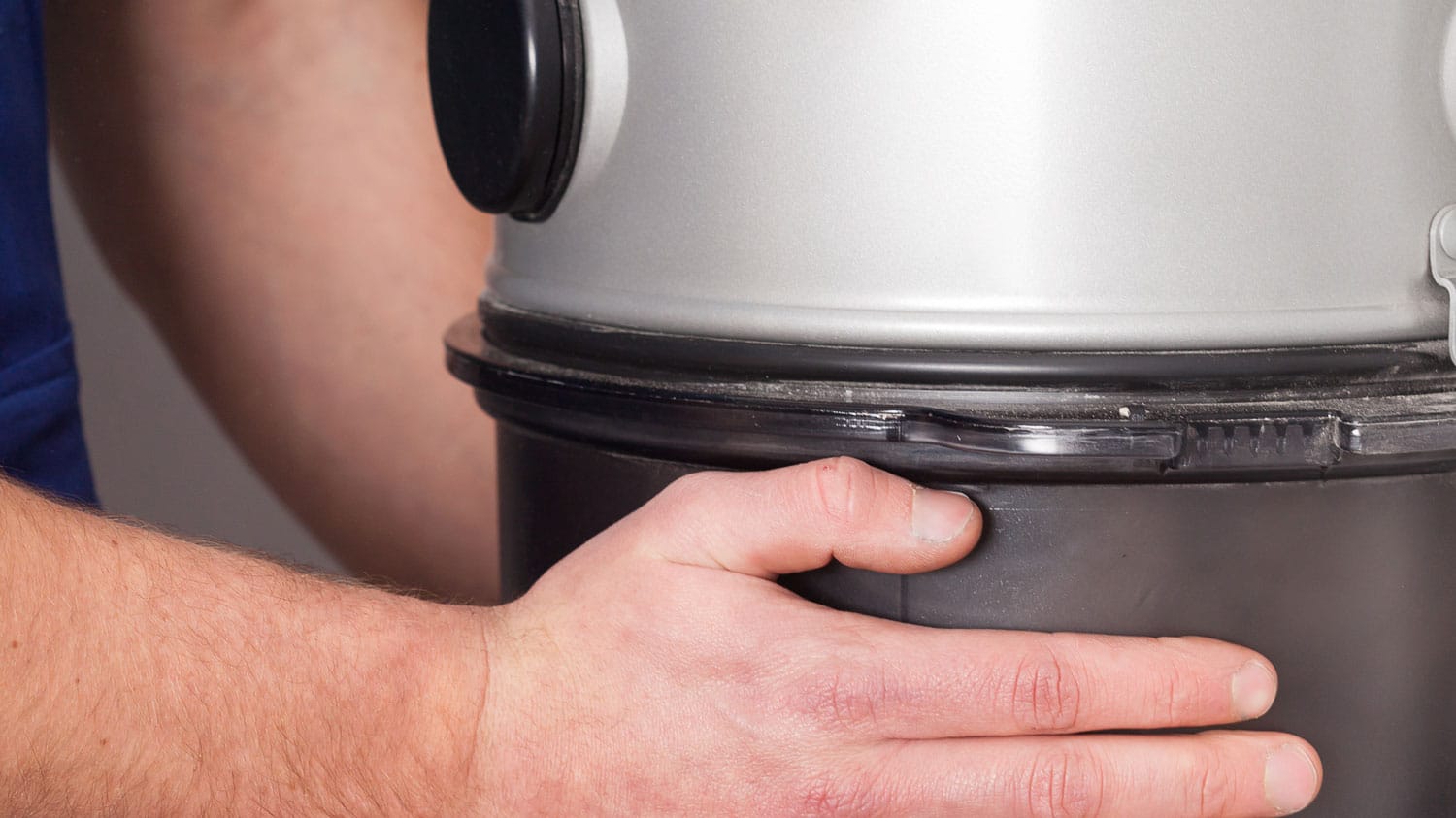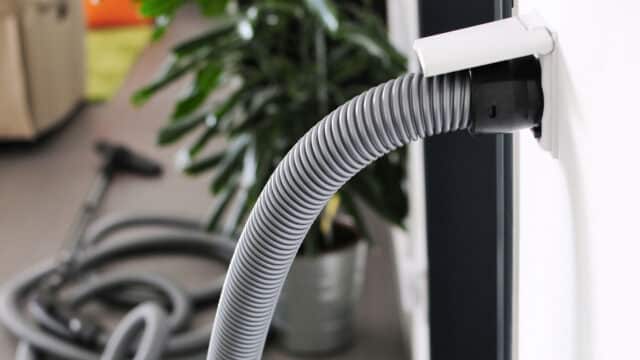What is a Central Vacuum? (And Why You Might Just Fall in Love With One)
What is a Central Vacuum? (And Why You Might Just Fall in Love With One)
April 23, 2025
So, What Is a Central Vacuum?
Let’s skip the buzzwords and get to the good stuff: a central vacuum system is like the VIP version of your regular vacuum. But instead of dragging a heavy machine from room to room, you plug a lightweight hose into wall inlets, and voilà—dust disappears into a hidden system that lives out of sight, usually in your garage or basement.
Everything gets sucked away through a network of pipes behind your walls, ending up in a collection canister far from where you breathe. It’s powerful, it’s discreet, and it’s cleaner in more ways than one.
If you’ve ever thought, There has to be an easier way to do this, well… this is it.
How Do Central Vacuum Systems Work?
At its core, a central vacuum is all about smart design. Picture this: inlets placed throughout your home, all connected to a powerful centralvac unit. When you plug in the hose, the system kicks on—quietly—and starts pulling in everything from dust bunnies to pet hair with serious suction.
The air (and all the grime it carries) travels through hidden tubing and lands in a container away from your living space. You can even add perks like retractable hoses or built-in dustpans that suck up whatever you sweep their way. No fuss, no hauling, no wheezing vacuum noises interrupting your music or meetings.
It’s the kind of system that just works—and keeps working for decades.

Central Vacuum Pros and Cons: The Honest Breakdown
Let’s be real: no system is perfect for everyone. But if you’re wondering whether this whole-house vacuum idea is worth it, here’s a quick look at the highs and lows.
What’s to Love:
- Big-league power: Central vacuums bring stronger suction than typical portable models.
- Fresher air: Dust and allergens are vented outside your living area—not recirculated.
- Long game: Many systems last 20+ years with just basic maintenance.
- User-friendly: No pushing, pulling, or tangled cords—just plug in and clean.
What Might Give You Pause:
- Initial investment: It’s a bigger upfront cost than buying a standard vacuum.
- Retrofitting effort: Installing in an existing home takes some planning (but it’s doable—more on that soon).
- Fixed setup: Your inlets are permanent, so strategic placement is key.
But here’s the thing: for many Utah homeowners, the convenience, air quality, and longevity of a central vacuum system make it well worth the leap.
What’s the Installation Like?
Central vacuum installation isn’t a DIY weekend project—and that’s a good thing. You don’t want a system that’s cobbled together. You want one that’s custom-built for your home’s layout, your lifestyle, and your cleaning habits.
At Reed’s Built-Ins, we handle the full process:
- We map out where inlets and tubing will work best.
- We install the centralvac power unit in a smart, accessible spot.
- We test everything to make sure it runs like a dream.
Whether it’s new construction or a well-loved home, our team makes installation seamless and tidy—no gaping holes in your drywall, no guesswork.

Wait—Can You Add One to an Existing Home?
Yes, and we do it all the time. If you’re thinking central vacuums are just for new builds, think again.
Our installers use crawl spaces, attics, and basements to route tubing with minimal disruption. Even in older homes, we can often tuck the system in without leaving a trace. You’ll get a modern upgrade without compromising your home’s charm or structure.
Whether you’re living in a Salt Lake City bungalow or a Park City stunner, there’s almost always a way to make it work.
Is a Central Vacuum Right for You?
Let’s do a quick gut check. A central vacuum system could be a smart move if:
- Your home is more than one level and lugging vacuums is your least favorite workout.
- Someone in your home has allergies and cleaner air is a top priority.
- You’re building or remodeling and want to invest in something that’ll last.
- You’re tired of replacing traditional vacuums that don’t hold up.
Even if you’re not sure, a quick chat with our team can help you weigh the pros and see if it makes sense for your space and budget. We’re not here to pressure—just to help you make an informed decision.
Why Choose Reed’s Built-Ins?
Here’s the deal: Reed’s Built-Ins has been installing home tech systems in Utah for over 50 years. We don’t follow trends—we set the standard. From design to installation and ongoing support, we make sure every system we touch is built for performance and built to last.
So when you’re ready to ditch the cord chaos and embrace a smarter clean, we’re here to help.
Let’s make your life easier, cleaner, and a little more high-tech.
Contact us today to get started!
FAQs: Central Vacuum Edition
Can you DIY a central vacuum installation?
Technically? Sure. Realistically? Not recommended. Installing a central vacuum system involves careful planning, cutting into walls, routing tubing, and electrical work. It’s not a plug-and-play situation. One wrong move could mean poor suction or a costly repair down the line. A professional installer—like the pros at Reed’s Built-Ins—ensures everything is done right the first time, with zero guesswork.
What are the different types of central vacuums?
There are a few options, but they all boil down to two main setups:
- Bagged systems, which collect debris in disposable bags—great for easy cleanup and allergy control.
- Bagless systems, which use filters and a canister you empty manually—lower ongoing cost, but a bit more hands-on.
Some systems are hybrid and offer both options. You can also choose features like self-cleaning filters, sound insulation, or retractable hose setups to match your lifestyle.
Are central vacuums worth it?
If you’re after cleaner air, stronger suction, and long-term convenience, central vacuums are 100% worth considering. They often outlast traditional vacuums by decades and add resale value to your home. Yes, the upfront cost is higher—but the payoff in performance and longevity makes it a smart investment for many Utah homeowners.
What’s the lifespan of a whole house vacuum system?
A well-installed central vacuum system can last 20 years or more, especially if it’s professionally maintained and fitted with high-quality components. You may need to replace accessories like hoses or brushes over time, but the core system is built to endure—another reason it stands apart from your average upright vacuum.
